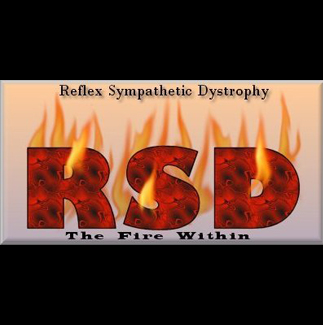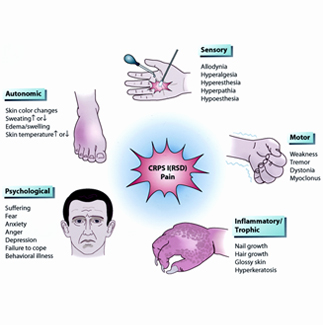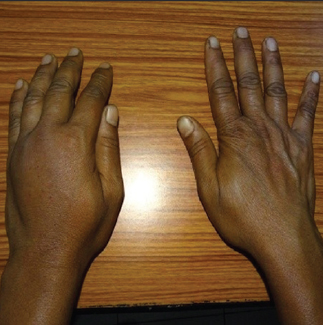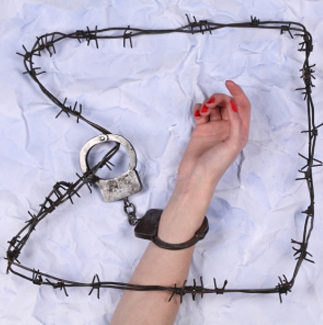Complex regional pain syndrome (CRPS) is a debilitating condition, characterised bypain in a limb, in association withsensory, vasomotor, sudomotor, motor and dystrophic changes.
It commonly arises after an injury to that limb.
Pain is typically the leading symptom of CRPS but is often associated with limb dysfunction and psychological distress.
Patients frequently report neglect-like symptoms or a feeling that the limb is ‘alien
CRPS can be divided into two types based on the absence (type 1, much more common) or presence (type 2) of a lesion to a major nerve.
DIAGNOSTIC CRITERIA
1. Continuing pain, which is disproportionate to any inciting event
2. Must report at least one symptom in three of the four following categories
Sensory: Reports of hyperalgesia and/or allodynia
Vasomotor: Reports of temperature asymmetry and/or skin color changes and/or skin color asymmetry
Sudomotor/Edema: Reports of edema and/or sweating changes and/or sweating asymmetry
Motor/Trophic: Reports of decreased range of motion and/or motor dysfunction (weakness, tremor, dystonia) and/or trophic changes (hair, nail, skin)
3. Must display at least one sign* at time of evaluation in two or more of the following categories
Sensory: Evidence of hyperalgesia (to pinprick) and/or allodynia (to light touch and/or deep somatic pressure and/or joint movement)
Vasomotor: Evidence of temperature asymmetry and/or skin color changes and/or asymmetry
Sudomotor/Edema: Evidence of edema and/or sweating changes and/or sweating asymmetry
Motor/Trophic: Evidence of decreased range of motion and/or motor dysfunction (weakness, tremor, dystonia) and/or trophic changes (hair, nail, skin)
4. There is no other diagnosis that better explains the signs and symptoms
ASSESSMENT OF CRPS SEVERITY
If one or more of the following features that indicate moderate or severe disease and/or poor recovery are present, an early referral to a multidisciplinary pain clinic or specialist unit is recommended:
presentation with moderate to severe signs and symptoms (except if of very recent onset after trauma and quickly resolving)
presence of dystonia
no positive treatment response within four weeks
condition deteriorates or improvements are not sustained despite ongoing treatment.
In addition to providing CRPS-specific rehabilitation techniques, specialist units may treat patients with advanced drug and interventional techniques, including spinal cord stimulation.
MEDICAL MANAGEMENT
1.PSYCHOSOCIAL AND BEHAVIOURAL MANAGEMENT
Identify any psychological factors contributing to pain
Treat anxiety and depression
Identify, explore and proactively address any internal factors (eg counter-productive behaviour patterns) or external influences (eg perverse incentives, family dynamics etc)
Consider needs of family/carers – provide psychological intervention/counselling where appropriate
Provide a practical problem-solving, goal-orientated approach (involving both the patient and their family) to reduce barriers and promote healthy functioning
2.PHYSICAL MANAGEMENT
Retrain normal body posture
Desensitisation – handling the affected part following by passive stretching and isometric exercise
Progression to active isotonic exercise and then strength training
General body re-conditioning – cardiovascular fitness
Encourage recreational physical exercise and functional goals
Techniques to address altered perception and awareness of the limb, eg mirror visual feedback training or graded motor imagery
3.PHARMACOLOGICAL MANAGEMENT OF CRPS
Drugs with efficacy in neuropathic pain should be used
Pamidronate (single 60 mg intravenous dose) should be considered for suitable patients with CRPS less than 6 months in duration as a one-off treatment.
4.INTERDISCIPLINARY MANAGEMENT OF CRPS
All treatments were focused primarily on functional restoration; the use of drugs, blocks, and psychotherapy was reserved for patients failing to progress in the functional algorithm. Interdisciplinary pain management techniques emphasizing functional restoration.
very gentle active movements such as progressing from active range of motion (ROM),
to weight bearing such as carrying light bags with the upper extremity or
putting partial weight on the lower extremity in gait training.
Gradual desensitization to increasing sensory stimulus goes along with increased function.
if the allodynic pain is too great, a sympathetic and/or somatic block may give the patient a comfort window of opportunity to begin to entertain more aggressive therapy
if a patient has kinesiophobia, cognitive behavioral techniques could be undertaken to demonstrate to the patient that movement does not necessarily lead to negative consequences.
psychotherapy, and drugs should be used mainly in situations of failure to progress; however, if a patient presents with significant concomitant problems (e.g., depression), then certain drugs, blocks, or psychotherapies are recommended from the outset.












